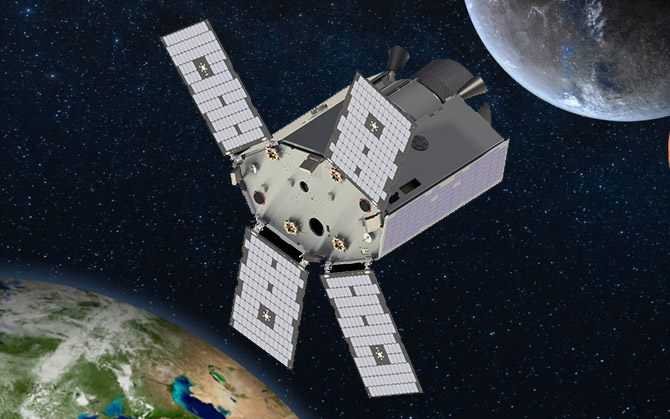The Twinkle satellite
A Mission to unravel the story of planets in our galaxy

6 August 2018
The Twinkle satellite will study the light from hundreds of exoplanets using spectroscopy to improve our understanding of their chemical composition, weather and history. It is a low cost mission which will be launched into a low-Earth orbit. The satellite will be built in the UK; the instrumentation will be led by UCL and the platform designed by Surrey Satellite Technology Ltd.
The Earth is special to us – it’s our home. But is it really special as a planet?
Every star you can see in the night sky is likely to be orbited by planets. There are probably a hundred billion planets in our galaxy alone. Are Earth and the Solar System rare examples where all the conditions are just right to support life? Or are there trillions of worlds out there that have an environment that is habitable?
Right now, nobody knows the answers.
In only 25 years, we have discovered over 3700 “exoplanets” in distant solar systems, and spotted many thousand more objects that may turn out to be alien worlds. But for all except a handful, we know only three things: where they are, how big they are and how close they are to their sun.
What about the interesting things? What’s the weather like? How have they evolved? Do big planets tend to swallow up small planets? Are there gases in the atmospheres that are the tell-tale markers of life?
International space agencies are not planning a mission to answer these questions for at least a decade. However, we have the capability and expertise – today – to find the answers.
Twinkle is a small mission with a big ambition: to be the first spacecraft to reveal what alien worlds are really like.
Twinkle will be the first mission specifically designed with the unique capabilities required for characterising exoplanet atmospheres. Its capabilities can also carry out space-based spectroscopy of solar system objects. Spectroscopy of exoplanets’ atmospheres has been pioneered with the Hubble and Spitzer space telescopes, both now nearing the end of their missions.
Other current and planned exoplanet space missions (e.g. Kepler, TESS, CHEOPS, Gaia and PLATO) and ground-based facilities (e.g. HARPS or Super-WASP) are designed to find new planets, rather than characterise their atmospheres. Twinkle will fill a current gap in facilities suitable for this challenging area of science.
 Close
Close

